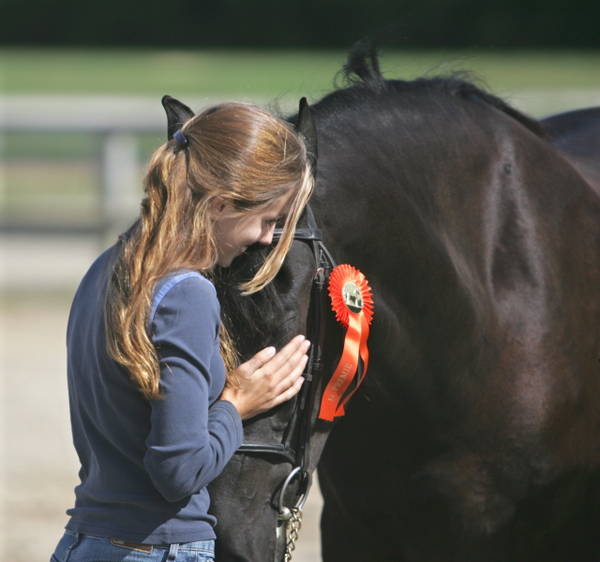Spring is in the air! For most of the country this means snow is melting, mud is everywhere, flowers are in bloom and you are just starting to consider wearing your light winter jacket. In Arizona, we are already in the high 80s! Spring is a bit different in Arizona with our desert weather, but I was a bit surprised to find Spring vaccines were pretty similar compared to when we lived on the East coast. Many insect-borne diseases are still common in our desert climate.
Spring vaccines are an important part of preventative care for your horse. It is important to know what each vaccine is, what your horse is at risk for (which can vary by your area), and what your horse might be exposed to if you are planning on traveling. The first thing you need to understand for vaccines are the categories: core vaccines vs. risk-based vaccines.
These categories are exactly what the names imply. Core vaccines are recommended for every horse annually. These vaccines should be given regardless of your horse’s living situation, exposure, age, or use.
Having trouble keeping your horse records organized? Download my FREE Horse Records Template!
Risk-based vaccines should be considered for your horse depending on risk factors — where you live, how often and where you travel to, and chances of exposure.
Core Vaccines
- Rabies
- Tetanus
- West Nile Virus
- Eastern Equine Encephalitis (EEE)/Western Equine Encephalitis (WEE)
Risk-Based Vaccines
- Equine Influenza
- Strangles (Often given intra-nasal)
- Equine Herpesvirus (Rhinopneumonitis) (EHV)
- Potomac Horse Fever
- Botulism
- Equine Viral Arteritis
- Anthrax
- Rotavirus
- Snake Bite
- Leptospirosis
Creating a Spring Vaccine Schedule
We always recommend working with your veterinarian to create a vaccine schedule that meets your horse’s needs.
As you work with your vet, consider:
Where You Live
Some diseases are widespread, while others are regional or local. You’ll want to be sure to vaccinate for common diseases where your horse lives or where you might travel to for shows or events.
How Your Horse Lives
Horses that go to events and horse shows with other horses are more likely to come into contact with and need protection against diseases.
If you do not travel with your horse, but your horse lives with horses that do, consider vaccinating as if they were traveling. Horses can carry diseases without being symptomatic and infect other horses when they come home.
Use
Vaccine requirements for broodmares, foals, and breeding stallions will vary compared to a show or pleasure horse. In general, it is recommended that broodmares get their annual core vaccines prior to foaling to provide protection to the foal.
Young horses receiving vaccines for the first time will need booster vaccines within a few weeks of the first vaccines.
Stallions and broodmares will also have additional vaccine requirements outside of the core vaccines. A series of EHV-1 (Pneumabort) vaccines are given to pregnant mares at 3, 5, 7, and 9 months of gestation to prevent risk of abortion due to EHV-1.
Age
Horses under the age of five are more susceptible to EHV and West Nile Virus. You’ll want to take extra precautions if your horse has the potential to be exposed.
Why Give Spring Vaccines in the Spring?
So, why are Spring vaccines given in the spring? The simple answer is many of the diseases (West Nile Virus, EEE/WEE) you are vaccinating against are spread by insects. As the weather gets warmer and insects come back out (in most areas), you’re more likely to have exposure.
Other vaccines, such as Rabies and Tetanus, are not transmitted by insects and can be given at any time of the year. Many horse owners opt to do these vaccines with the Spring vaccines to save time and prevent them from forgetting to give them later in the year.
Looking for more information? American Association of Equine Practitioners (AAEP) also provides equine vaccination guidelines for horse owners.

I’ve been around horses my entire life, but my Friesian journey started just over 20 years ago. Our horses have always been a part of our family. They have traveled with us as we relocated from Vermont to New York to Iowa and finally, to Arizona. I can’t wait to share our story with you!
Related
Apr 10, 2021
What Horse Spring Vaccines are Important and Why?

Leave a Reply Cancel reply
@starlitridgefriesiansandfells
LET'S BE FRIENDS ON INSTAGRAM